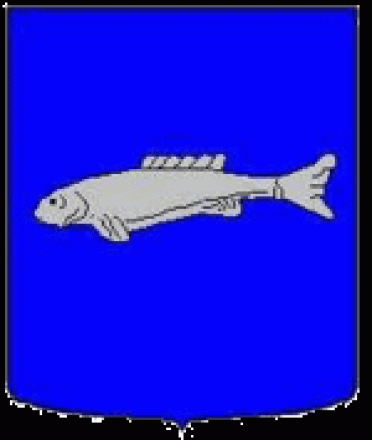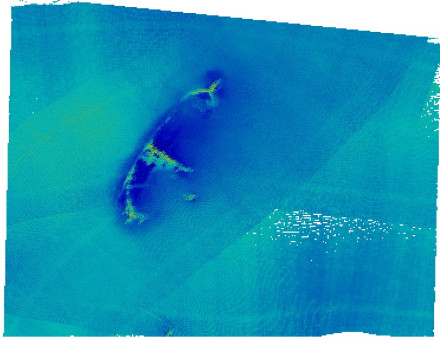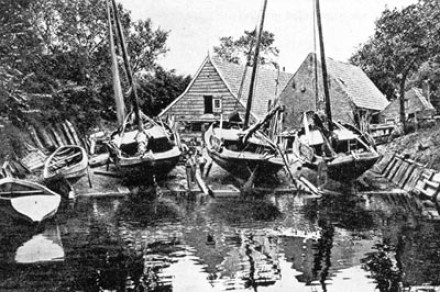History
First survey
On the 10th of July 2007, the underwater archaeology team of the RACM (now the Cultural Heritage Agency of the Netherlands (RCE)), together with a team from the Department of Waterways and Public Works/section IJsselmeer, conducted a one-day survey on a shipwreck that was discovered in front of the harbour of Urk.
Urk is a typical small fishing village on the northeast side of what used to be the Zuiderzee inland sea. It is the smallest municipality in the province of Flevoland. Urk was an island until 1939, when a dike connected the village with the mainland at Lemmer. A few years before, in 1932, the large dike called Afsluitdijk had been finished, closing off the Zuiderzee and its open connection with the sea, thus turning it into the lake that today is called the IJsselmeer.
In 1942, all the land to the northeast of Urk was reclaimed and this was called the Noordoostpolder. This completely connected the village with the mainland.
However, the island feeling still exists. One doesn't live in Urk, but still on Urk! Urk is still very much connected with the water. The village itself lies on the shores of the IJsselmeer, but it has the biggest fishing vleet in the Netherlands, with ships active in every corner of the world.


IJsselmeer
The Urk 1 wreck is a fishing boat of a recent date. We believe it sank in the first half of the 20th century. The wreck (size: approximately 14 x 5 metres) is that of a flat bottomed boat which has sunk away in the seabed almost completely. Only a maximum of 1 metre of construction can be seen above the surface. The IJsselmeer is only 4 metres deep at the wreck site.
The aft of the ship with deck, stern and rudder is still present. A fish box can also be seen. This is situated more or less in the middle of the boat. It is a box that was used to keep the fish that were caught alive. The outer planking is perforated with small holes which keeps the surrounding seawater flowing in. Towards the bow and the stern the fish box is closed of with a large heavy wooden partition wall (Dutch: bunschot). The bow of the boat is very much disturbed and the stern itself is ripped from the construction. However, a deck is still present here.

The boat was mainly constructed of wood. However, the wooden hull was also sheeted with iron. The reason for this could be the following: when it was known that in 1932 the Zuiderzee was going to be closed off from the Wadden Sea and North Sea, due to the creation of the Afsluitdijk, it was also clear that at least half of the ships actively fishing in the Zuiderzee were supposed to stop their activity and a large buy-out was going to be set up. Due to this, many people prolonged the lives of their fishing ships until the moment of buy-out without investing too much. After that many of the ships were deliberately sunk or grounded. In 1997, the former NISA archaeology unit also did a research on several dumped ships from that same period along the river IJssel in Kampen.

The site has been dated using the typology of the ship, the use of different materials, and very characteristic: the sheeting of the original wooden planking with iron.
Wood samples for dendrochronological research were also taken. However, although the samples had enough year rings, we were not able to date the oak wood.
Description
Type: wooden fishing boat with fish box, sheeted with iron.
Dimensions: 14 x 5 m.

Status
The site is considered to be of low archaeological value. However, it does have significance for the region (around the IJsselmeer) and a specific period (the closing of the Zuiderzee in 1932). The RCE will not take any actions on the site, due to the fact that it takes responsibility for sites that are of national and international significance - yet this doesn't mean the site has no significance on a local level since it seems to be connected to a pivotal point in the history of the Zuiderzee and the village of Urk.
References
- Management plan of Urk 1. Internal report RCE.
- Manders, M.
Duikactie op Urk. Verkenning IJsselmeer Urk 1.
Rijksdienst voor het Cultureel Erfgoed.